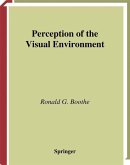Aimed at students taking a course on visual perception, this textbook considers what it means for a man, a monkey and a computer to perceive the world. After an introduction and a discussion of methods, the book deals with how the environment produces a physical effect, how the resulting "image" is processed by the brain or by computer algorithms in order to produce a perception of "something out there". It also discusses color, form, motion, distance, and also the sensing of three dimensionality, before dealing with visual perception and its role in awareness and consciousness. The book concludes with discussions of perceptual development, blindness, and visual disorders. Visual perception is by its very nature an interdisciplinary subject that requires a basic understanding of a range of topics from diverse fields, and this is a very readable guide to all students whether they come from a neuroscience, psychology, cognitive science, robotics, or philosophy background. This is atext book aimed at a student taking a course on visual perception. Throughout, the book considers what it means for a man, a monkey and a computer to perceive the world. After an introduction to the subject and a discussion of methods, the book deals with how the environment produces a physical effect, how the resulting "image" is processed by the brain and by computer algorithms in order to produce a perception of "something out there". The book discusses color, form, motion, distance, and also the sensing of three dimensionality. Visual perception and its role in awareness and consciousness is then discussed. The book finishes up with discussions of perceptual development, blindness, and visual disorders.
Visual perception is by its very nature an interdisciplinary subject that requires a basic understanding of a range of topics from diverse fields. This book provides a very readable guide to all students whether they come from a neuroscience, psychology, cognitive science, robotics, or philosophy background.
Visual perception is by its very nature an interdisciplinary subject that requires a basic understanding of a range of topics from diverse fields. This book provides a very readable guide to all students whether they come from a neuroscience, psychology, cognitive science, robotics, or philosophy background.








